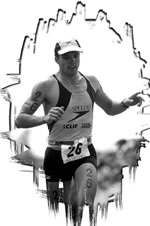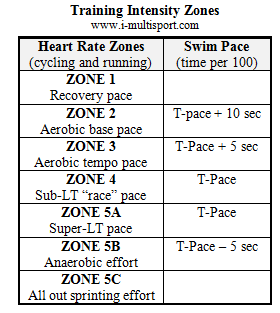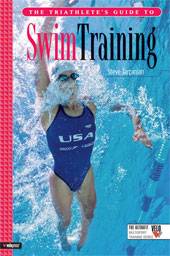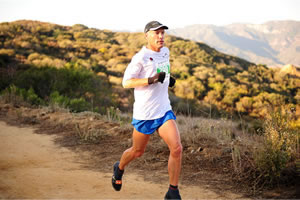January 16, 2010 (Boulder, CO) – While attention to good form is a year round project, this time of the year is particularly conducive to establishing good habits in the water. As you transition from your off-season to begin preparing for the rigors of early season base training, you have an opportunity to leave bad habits behind and start fresh with your training. As you dive back into the pool, here are two drills and two workout sets to help improve your efficiency in the water.
Drill #1: The fists drill
While triathletes are notorious for strapping giant paddles on their hands and pulling endlessly up and down the pool, the “fists drill” is more like swimming with anti-paddles. Just as the name implies, close up your hands into fists and swim. If you feel like you aren’t getting very far, remember to keep your elbow high during the pull phase of the stroke. Let your arm seek out the optimal position that grips the water and provides the most power. If you have a tendency to drop your elbow and let your arm slip through the water, this drill will provide the feedback you need to develop a better ‘feel’ for proper arm positioning during your stroke.
Drill #2: The catch-up drill
Have you ever noticed how the faster boats are the longer boats (think a rowing team’s racing shell versus a fisherman’s rowboat)? The same physics that apply to building a fast racing boat apply to the human body moving through the water. The catch-up drill will help you focus on maintaining a long body in the water. To do the drill, maintain your non-stroking arm in front of you in its initial extended position. Then wait until the stroking arm “catches up” with your extended arm before taking your next stroke. This effectively slows down your swimming, and allows you to focus on stroking with one arm at a time. But more importantly, it shifts your center of gravity forward a bit to give you a more balanced body position. In addition, it gives you a longer profile more like a racing shell than a barge. For swimmers who have a tendency to rush through the initial extension phase, aim for a ¾ catch-up while swimming at your aerobic base pace to ingrain this longer body position into your new habits.
Set #1: The fartlek swim
Runners have used fartlek workouts for years to vary the intensity of a continuous aerobic effort. The same principles can be applied in the pool to develop form and speed skills along with aerobic conditioning. During a continuous swim that lasts from ten minutes to a half hour (the exact duration will depend on your racing goals and current fitness level), repeat the following pattern: 25 drill, 25 build freestyle, 25 sprint freestyle, 25 recovery backstroke. For the 25 drill, alternate between the fists and catch-up drills described above. The “build freestyle” involves gradually increasing your speed. When you hit the wall after the 25 build; then sprint the next 25 as fast as you can without breaking form. The final 25 in this pattern flips you over onto your back to stretch out your freestyle muscles for a 25 before turning back over to drill, build and sprint again.
Set #2: A round of freestyle golf
This set consists of 8-12 x 50s with a 30 second rest interval. Time your 50 and count your strokes. Add the two numbers together to get your ‘score.’ Aim to lower your score by increasing your speed and/or decreasing your stroke count. For example, if you swim the 50 in 40 seconds and take 32 strokes, your score is 72. You will need to play around with turning over or stretching out your stroke to find the optimal formula that will make you more efficient in the water.
Remember, good form equals “free speed.” With proper attention to form as you begin to build your base for the coming season, you can establish a set of healthy habits that will improve your efficiency in the water along with your aerobic capacity.






